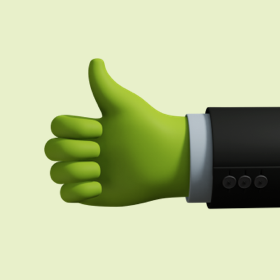For quite some time, Google has stated that its algorithms prioritize the end-users' experience and relevancy in their top search results.
By making the searcher's experience over the hierarchy of web pages a priority, Google ensures satisfied users. It also has benefits for professionals looking to rank with Google. Without searchers coming to websites and taking some action, the chances are that their position in the SERPs would drop.
Optimizing for user engagement does not mean to imply that technical SEO isn't necessary. Technical SEO still offers a lot of value to search engine marketers. What this means is that once the foundation is solid, the focus must shift to engagement SEO.
What is User Engagement?

User engagement is any meaningful interaction a visitor to any of your digital properties takes on that platform.
For example, if a user comes to your website and fills out a form or takes an assessment, that would be considered user engagement. When a visitor comes to your website, reads the content, and clicks-through to another page, that is also user engagement.
These actions show themselves with metrics such as Click-Through-Rate (CTR), Page Views, and Bounce Rates, which provide meaningful insight into how valuable your content proves to the user.
Backlinko recently summarized Google's 200 Ranking Factors. User Interaction factors included interactions and metrics, such as:
- Organic CTR for a keyword
- Bounce Rate
- Direct Traffic
- Repeat Traffic
- Pogo Sticking - a particular type of bounce in which the user clicks on other search results to find the answer to their query. Results that people Pogostick from may get a significant rankings drop.
- Blocked Sites
- Chrome Bookmarks
- Number of Comments
- Dwell Time
Understanding what each of these entails can help inform your SEO and content marketing strategies to enhance user engagement.
Effective Ways to Boost User Engagement (with Examples)
Interactive Tools
A site that offers interactive tools will often find that its engagement metrics and conversions perform better than those that do not. Interactive tools don't need to be overcomplicated and can be as simple as quote calculators or surveys.
Many online shoppers enjoy online shopping for the personalization of the experience. 
Take, for example, a site like Ipsy. Ipsy is a monthly subscription service for high-end makeup and skincare products. To get started, users fill out a personal assessment of their preferences and skin types. These assessments push users further along the sales cycle. They also provide a high value to the customer by ensuring that each bag's products will be curated specifically to their preidentified criteria.
Warbly Parker provides another example of e-commerce using interactive features to drive conversions. Warbly Parker provides frames for prescription glasses and invites users to the site to take an online quiz to determine which frames are well-suited for their face.
These interactive tools have demonstrated that users spend more time on the site and lead to higher conversions. Which also tends to lend itself to higher SERP ranking for SEO efforts.
According to Hubspot, if you use a tool like SEMrush to identify the most trafficked pages of a popular website, you will often find that they are interactive. When combined with installing event tracking within the goals, Google Analytics can report just how engaging they are.
Video Content

We previously mentioned that 2021 would be the year of the video. And for a good reason. Video is easier for people to process and encourages users to stay 2.6 times longer on a webpage.
Creating a valuable, high-quality video communicates your brand, offering, and value proposition in significantly less time than blog posts or web copy.
Some stunning examples of video marketing come from Maybelline.
Maybelline's campaign for Big Eyes Mascara hit a home run with video, user-engagement, and providing users with valuable content. They offered an interactive makeup tutorial video that allowed users to choose their experience. The video introduces the product and allows the user to select which video they'd like to view, day or night makeup looks.
This campaign resulted in:
- More than 6 million earned impressions
- CTR 14x higher than the industry average
- Brand engagement exceeded 5 minutes per interaction
- Average of three video interactions per viewer
Have FUN!
Digital marketing has evolved in the last few years. It has led to more creative and interactive ways to reach audiences. Allow yourself to have a little fun and engage with your users. It's important to remember that there are humans behind every metric you monitor. Ask yourself how your brand can provide them with a fun yet relevant experience.




